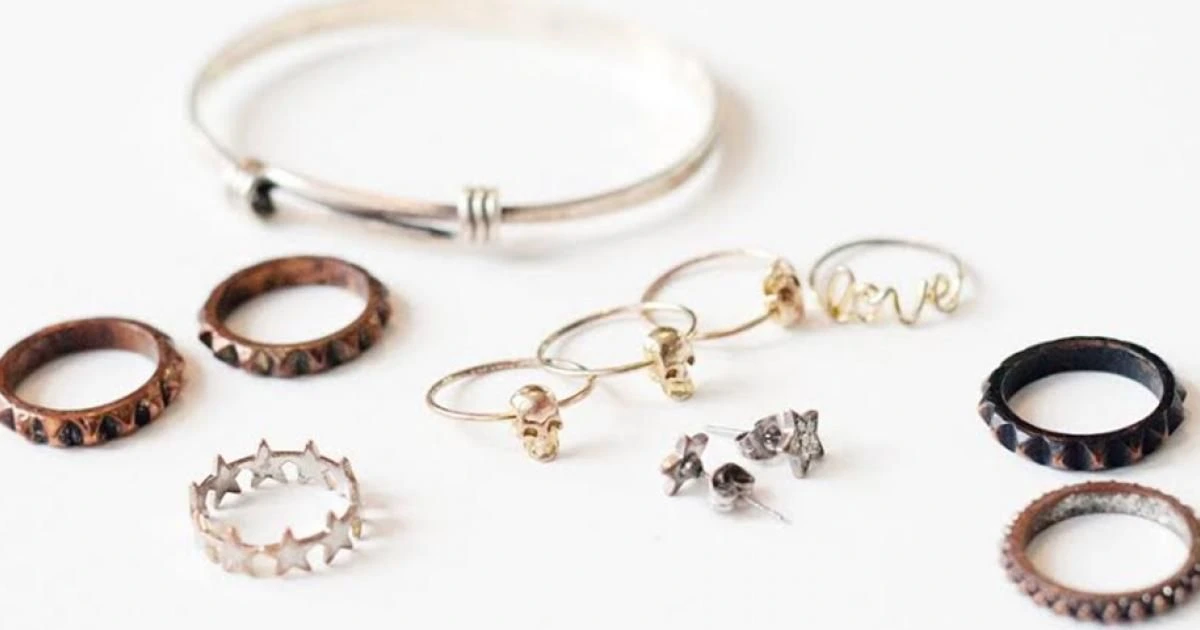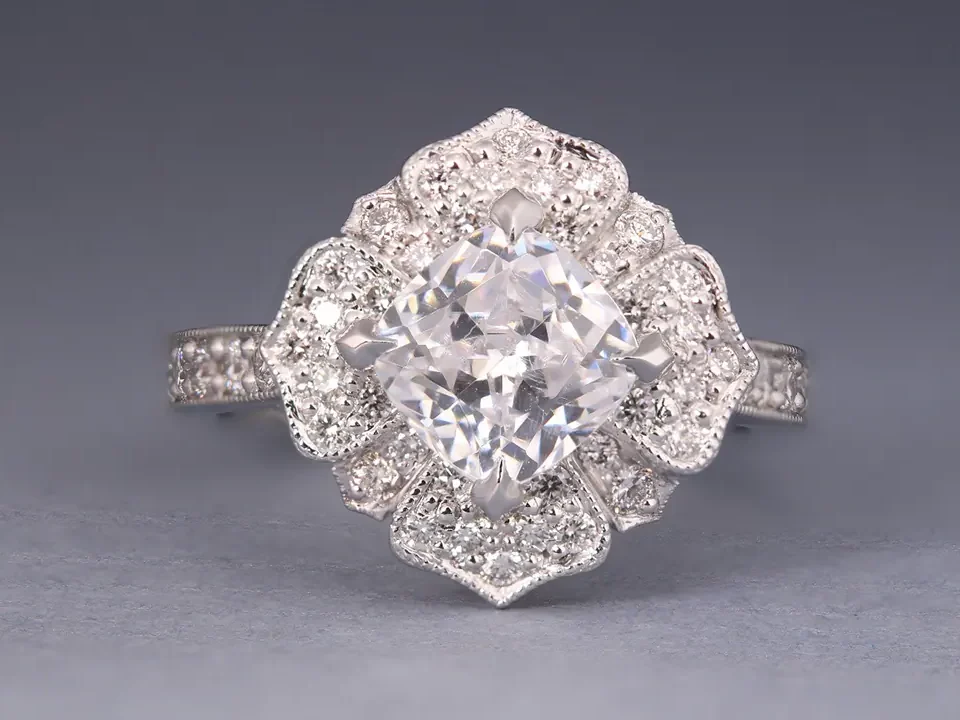Tarnished jewellery can be disheartening. Whether it is a sentimental piece or part of your everyday collection, that dull coating steals away the beauty and brilliance you once admired. Thankfully, preventing tarnish is not complicated. It just requires consistent care, thoughtful storage, and a little know-how.
As a team that understands the importance of preserving fine pieces, we want to share practical tips on how to stop jewellery from tarnishing so you can keep your jewellery looking its best for years to come.
Keep in sealed containers
The tarnishing process begins when metals like silver react with air and moisture. It is a slow chemical reaction, but it can quietly dull your favourite items if you are not proactive. That is why airtight containers are such a smart storage choice.
Choose glass or sturdy plastic containers with tight-sealing lids. Containers fitted with rubber gaskets provide even better protection.
For smaller items like earrings or rings, vacuum-sealed bags are especially effective, as they remove nearly all the air. Before sealing anything away, make sure each piece is clean and completely dry. Even a small amount of moisture can accelerate the tarnishing process.
We also recommend adding silica gel sachets to your storage containers. These help absorb residual humidity, which further limits the risk of tarnish.
If you prefer a softer storage solution, go for fabric pouches made from cotton or anti-tarnish material. Both options shield your jewellery while being gentle on surfaces.
Store in anti-tarnish pouches and tabs
Sometimes, storing jewellery in airtight containers is not enough, especially if you live in a humid area or keep a large collection. Anti-tarnish pouches and tabs are designed to provide extra defence by absorbing the chemicals in the air that lead to tarnish.
These products use copper-based polymers to neutralise gases like hydrogen sulphide, which causes metals to darken. The great part? Modern versions are non-toxic, odourless, and will not leave residue on your jewellery.
A single strip can offer protection for several months, and anti-tarnish pouches can last for years if used properly. They are small, low-maintenance tools that make a noticeable difference. We use them ourselves and often recommend them to customers who store jewellery long-term.
Remove moisture and dirt from jewellery before storing
Daily wear exposes jewellery to skin oils, lotions, and airborne pollutants. Left untouched, these can settle into grooves and create the perfect environment for tarnish to develop. That is why a quick wipe-down before storage is important.
After removing your jewellery for the day, gently clean it with a soft, lint-free cloth. This removes any lingering oils or residue without harming the metal or stones. It is a simple habit, but over time, it makes a significant difference in maintaining shine.
Drying is just as important. Moisture can get trapped in crevices or under prongs, where it quietly speeds up tarnish. Use a clean, dry cloth to pat your pieces down, paying extra attention to intricate settings or designs.
Use divided storage for different metals and gems
Mixing metals and stones in a single storage space might seem harmless, but it can cause unnecessary damage. Harder stones like diamonds can scratch softer materials, and different metals can react when stored closely, worsening tarnish.
To avoid this, keep items separated. Compartmentalised jewellery boxes, velvet-lined trays, or individual soft pouches can help keep your pieces protected.
For larger collections, consider organising by material: silver in one area, gold in another, and gemstone pieces kept apart from everything else.
We organise our own studio pieces in this way. Not only does it reduce physical damage, but it also helps us keep track of what needs polishing or repair.
Maintain a stable temperature and humidity
The environment in which jewellery is stored has a direct effect on how quickly it tarnishes. Fluctuating temperatures and high humidity levels create condensation. The tiny droplets of moisture encourage oxidation.
Aim to store your jewellery in a room where the temperature stays between 19 and 25 degrees Celsius, with humidity between 50% and 55%. Avoid storage spaces like bathrooms or windowsills, where the climate changes quickly throughout the day. If your indoor environment tends to be humid, using a small dehumidifier in your storage area is worth considering.
Protect jewellery from direct sunlight and high heat
Direct sunlight may seem harmless, but it can dramatically speed up tarnishing, especially for sterling silver. When jewellery is exposed to UV rays, chemical reactions accelerate and alters both the colour and structural integrity of metals.
Heat is another hidden hazard. Warm environments can soften adhesives, warp settings, and cause gemstones to lose their lustre. Even indoor spots near heaters or sunlit shelves can become problem areas. We always recommend storing jewellery in a cool, shaded place to avoid these risks.
Choose padded and fabric-lined storage
The materials that physically touch your jewellery matter more than you might expect. Rough fabrics or hard plastic can create small scratches, especially during frequent handling. Soft linings such as velvet, silk, or felt provide a gentle surface that cushions your jewellery while also helping reduce exposure to air and moisture.
If you are using drawers or boxes, make sure they have individual sections and that each one is lined properly. Even better, go for tarnish-resistant fabrics when possible. They offer another layer of protection.
Rotate Your Jewellery Collection
Wearing the same pieces every day can cause visible wear, but ignoring others in your collection has its own risks. Tarnish can develop on items that sit untouched for long periods, especially if they are not stored properly.
By rotating your jewellery every few weeks, you spread out the wear and give each piece a chance to shine—literally. It also allows you to catch any developing issues early, whether it is a loose clasp or the start of discolouration.
As we often say to our clients, jewellery is meant to be enjoyed. Regular rotation is one way to ensure every piece gets its moment without sacrificing its condition.
Some pieces, like Gold Coast engagement rings, are designed to be worn every day and are often crafted from metals that resist tarnish. The type of metal your jewellery is made from affects how often it needs to be cleaned and how it should be stored.
Still, no material is entirely immune. Even so-called tarnish proof jewellery benefits from proper care.
Keep jewellery cleaning supplies within easy reach
One of the easiest ways to stay on top of maintenance is to keep your cleaning tools where you store your jewellery. A polishing cloth, a soft brush, and a gentle cleaning solution are often all you need.
Jewellery polishing cloths, in particular, are worth having on hand. Most feature two layers: the inner one contains a mild cleaner that removes tarnish, while the outer one is for buffing. When used regularly, they can restore shine quickly without damaging the metal.
Keeping these tools close makes it easier to clean your jewellery on the spot rather than putting it off until the tarnish takes hold.
Travel With Protective Pouches
Travelling with jewellery adds another layer of risk. Tangling, scratching, and exposure to temperature changes can all occur during transit. That is why protective pouches and cases are essential when you are on the move.
Choose pouches made for specific types of jewellery—rings, necklaces, or earrings—to keep everything separate and secure. Travel cases with padding and anti-tarnish lining offer the best combination of protection and portability.
Whenever we pack pieces for events or client visits, we follow this method to ensure everything arrives safely and in perfect condition. With the right preparation, you can do the same.
Let Your Jewellery Shine for Years to Come
Jewellery care is about maintaining what you value: pieces that may hold memories, mark milestones, or simply bring joy to your day. With a few steady habits, from airtight storage to regular cleaning, your collection can stay brilliant for years to come.





